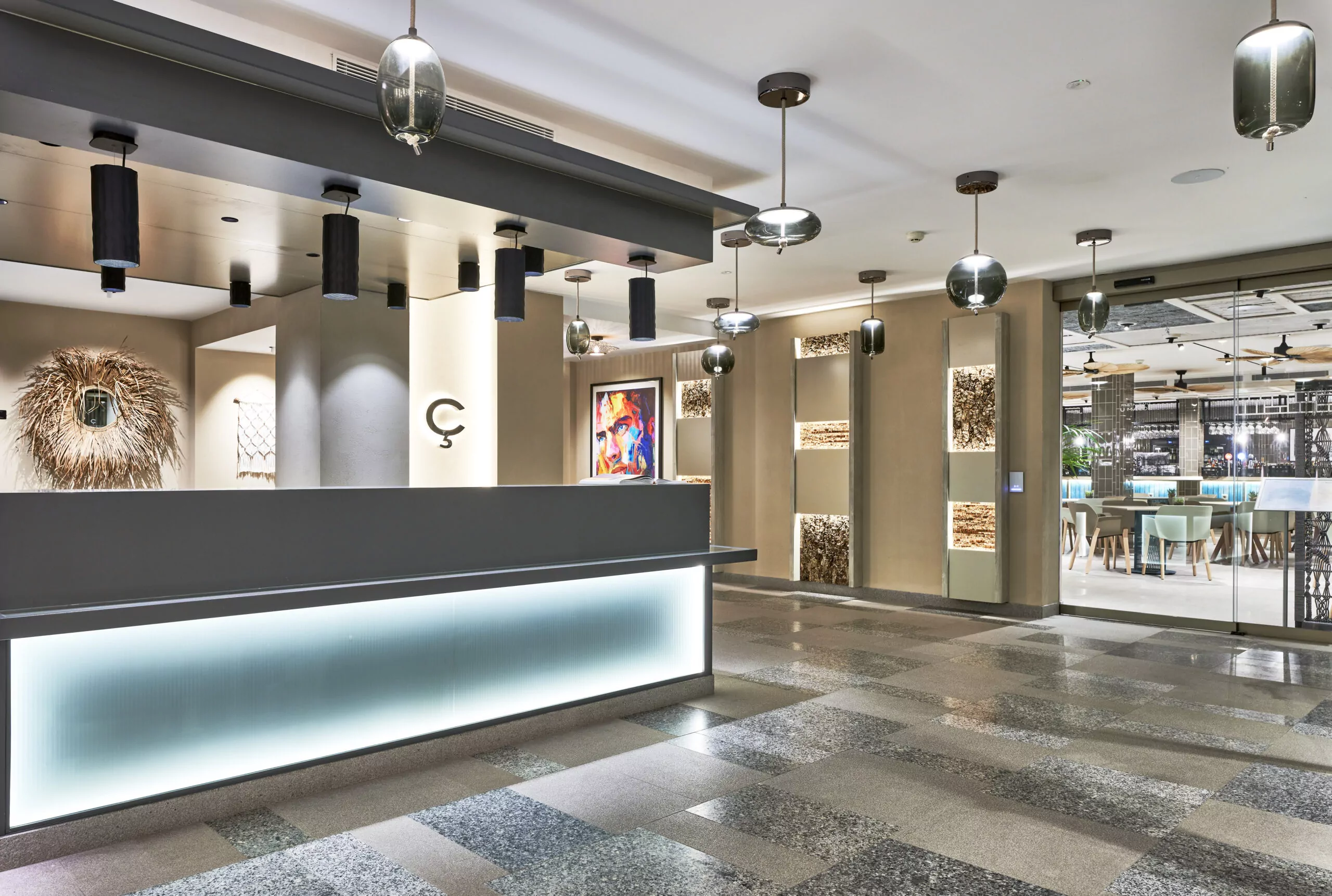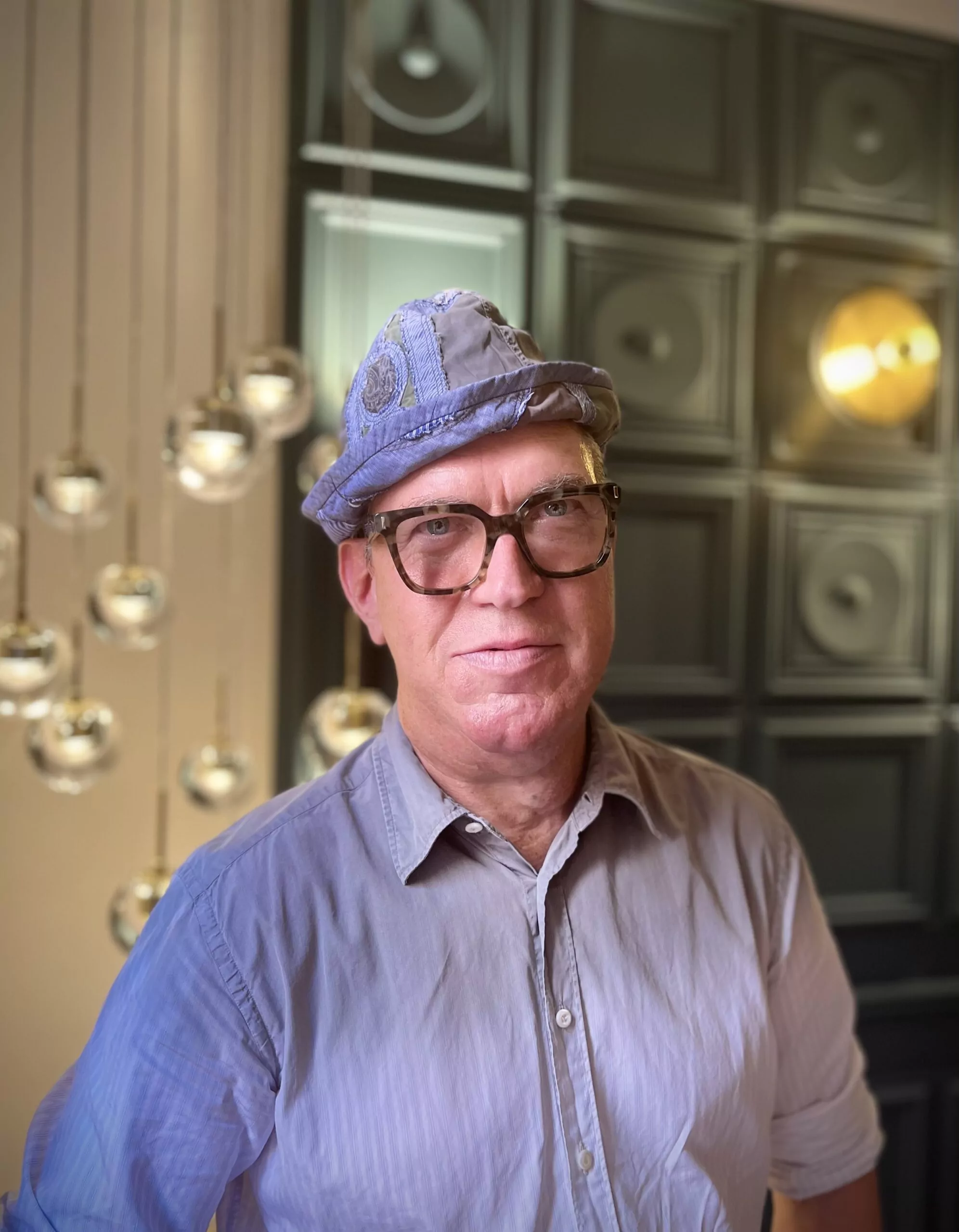Magnus Ehrland: del diseño de moda al desarrollo de proyectos de interiorismo en hoteles de cinco estrellas.
Para el proyecto de El Hotel El Vicenç tuvimos el placer de colaborar con Magnus Ehrland, quien se encargó tanto del interiorismo como del estilo de iluminación de este.
Inició su andadura profesional como diseñador de moda. De hecho, fue gracias a su vínculo con la internacional marca de moda Diesel por lo que consiguió su primer trabajo como interiorista en el Hotel Pelican de Miami Beach. Y es que Magnus nos explica que su temprana curiosidad y gusto por aquellos aspectos relacionados con la construcción y artesanía ha tenido mucho que ver en su desarrollo profesional.
Conocemos algo más sobre él en esta breve entrevista.
¿Cuál fue tu inspiración para El Vicenç? ¿A qué extensión ha contribuido el diseño de iluminación para expresar su concepto de diseño?
Cada rincón debe tener un propósito. Nunca dejo ningún espacio sin atención, y la iluminación es parte de ello. El proceso de diseño es complejo cuando quieres hacer algo especial.
Investigué un poco. Me enteré que los hoteles construidos en la zona eran de los años 50 o 60. Fue entonces cuando gran parte de la población tuvo la oportunidad de viajar al extranjero en avión por primera vez. Quería expresar esa emoción de viajar y aterrizar en un nuevo clima y cultura, con todo lo que eso significa.
En general, El Vicenç tiene algunos toques de los años 50 y 60, pero con un componente moderno, junto con detalles especiales para traer de vuelta a los huéspedes a su infancia y/o buenos recuerdos del pasado. Me encanta jugar con los objetos y darles nueva vida a poniéndolos en un nuevo contexto. Esta es mi interpretación de un estilo de vida mediterráneo moderno en esta Cala.
Para mí, la iluminación y el mobiliario deben equilibrarse. Creo que los hoteles de hoy en día están mucho más inspirados en el verdadero sentimiento de hogar cuando, hace algunos años, era al revés.
Estoy impresionado y orgulloso de lo bien que se ha adaptado El Vicenç al mercado.

Sabemos que ha utilizado algunas luminarias simbólicamente en algunas partes del hotel, ¿podría explicárnoslo?
Hay símbolos por todas partes. Uso luminarias para expresar ideas. Por ejemplo, quería representar el concepto de una línea de tiempo desde el momento en que ingresas al estacionamiento hasta que comienzas a subir las escaleras.
Otro ejemplo se puede encontrar en el spa, donde encima de la piscina alargada hay filas de colgantes con un estilo industrial. Quería que aportaran un elemento curioso y sorprendente en ese ambiente, y que hicieran contraste con ese típico muro mallorquín de piedra del fondo. Una vez más, volviendo a mi anterior concepto de infancia, al estilo mid-century, y jugar con objetos que pueden resultar familiares.
Tienes un estilo muy ecléctico, ¿cuál es tu enfoque a la hora de mezclar diferentes luminarias en una habitación?
Creo que puedes mezclar básicamente todo, si sabes lo que estás haciendo y lo haces con estilo y gusto. Suena tan simple y para mí es obvio, pero desafortunadamente hay muchos ejemplos que muestran lo contrario.
Siempre he tenido mucha curiosidad por la iluminación, por lo que he tratado de averiguar todo lo posible al respecto. Sé que hay una solución para casi todo. Cada vez que me dicen que algo no es posible, trato de averiguar por qué no.
Dicho esto, soy consciente de que la iluminación en un hotel debe satisfacer diferentes necesidades de los objetivos. Para ello, equilibro las luminarias tanto decorativas como técnicas de forma muy detallada. Por ejemplo, rechazo la idea general por la que se rigen la mayoría de los garajes como espacios blancos, a los que se incorpora una luminaria estándar de luz fría. Sucede lo mismo con las escaleras de emergencia, cuyo espacio se concibe meramente funcional en términos de iluminación.
¿Cómo crees que debería ser una buena solución de diseño de iluminación para una habitación de un hotel?
Debe tener una buena extensión y ser flexible para que se adecúe tanto a tareas más funcionales como al confort que busca el huésped. Debe tener en cuenta el contraste y, por supuesto, el ambiente. Los sistemas de regulación ayudan mucho a la hora de crear diferentes escenarios. Uno necesita pensar en la diferencia entre el día y la noche.
Me gusta crear sistemas, no necesariamente aburridos. Sistemas de experiencia.
¿Qué importancia tiene para usted el puesto de diseñador de iluminación? ¿Consideraría más colaboraciones con este tipo de profesionales?
Por supuesto. Creo que todos los creativos pueden aprender unos de otros. No es realista pensar que una sola persona puede con todo. Todos los aspectos en el campo de la construcción son igualmente importantes y es fantástico cuando podemos aprender unos de otros. Nadie debería tener miedo o vergüenza de pedir ayuda.
Magnus Ehrland, que vuelve a la moda por un tiempo, nos confiesa que trabajar con Worldlight para el hotel El Vicenç fue sencillo por la agilidad del equipo de diseñadores para encontrar luminarias alternativas con mejores prestaciones en una amplia gama de marcas.
………………………………………………………….
Magnus Ehrland: from Fashion Design to the development of Interior Design projects in five-star hotels.
We had the pleasure to meet and collaborate with Magnus Ehrland in El Vicens Hotel project, who oversaw its Interior Design as well as its lighting fixtures style.
He started his professional career as a Fashion Designer. In fact, it was thanks to his link with the international fashion brand Diesel that he got his first work as an Interior Designer for the Pelican Hotel in Miami Beach. Magnus states that his early curiosity and taste for those aspects related to construction and craftmanship had a lot to do with his professional development.
We find out more about him in this short interview.
What was your inspiration for El Vicenç? To what extent has the Lighting Design contributed to expressing the design concept of it?
Every corner should have a purpose. I never leave any space unattended, and lighting is part of it. The design process is complex when you want to do something special.
I did some research. I found out that the hotels built in the area were from the 50’s or 60’s. It was back then when people started taking flights for the first time. I wanted to recreate that thrill of traveling and that excitement of landing in a new climate and culture, with all that that implies.
In general, El Vicenç has some touches from the 50s and 60s, but with a modern twist, together with special details to bring guests back to their childhood and/or fond memories from the past. I love playing with objectsand giving them a new life by putting them into a new context. This is my interpretation of a modern Mediterranean lifestyle in this cala.
For me, lighting and furniture have to be balanced. I think that today’s hotels are much more inspired by a true home feeling whereas, a few years ago, it was the other way around.
I am impressed and proud of how well El Vicenç has adapted to the market.
We know that you have used some luminaries symbolically in some parts of the hotel, could you tell us how?
There are symbols everywhere. I use luminaries to express ideas. For example, I wanted to represent the concept of a timeline from the moment you enter the parking lot until you start walking up the stairs.
Another one can be found in the spa, where above the pool are rows of industrial-style pendants. I wanted them to provide a curious and surprising element in this environment in contrast with that typical Mallorcan stone wall at the background. Once again, going back to my previous childhood concept, to mid-century style, and playing with objects that can result familiar.
You have a very eclectic style, what is your approach when it comes to mixing different lighting fixtures in a room?
I believe you can basically mix anything, if you know what you’re doing, and you do it with style and taste. It sounds so simple, and it’s obvious to me, unfortunately there are many examples that show opposite.
I have always been very curious about lighting. That is the reason why I have tried to find out as much as possible about it. I know there is a solution for almost everything. Every time I am told that something is not possible, I try to find out why it is not.
Having said that, I am aware that lighting in a hotel needs to satisfy different target needs. To do so, I balance both decorative and technical luminaires in a very detailed way. For example, I reject the general idea that most parking areas are conceived with. Just white spaces lightened by standard cold luminaires. This also happens in emergency staircase areas, which are thought to be just functional in terms of lighting.
What do you think a good Lighting Design solution for a hotel room should look like?
It should spread smoothly and be flexible so it can both for functional performance and for that comfort guests are looking for. Contrast, and of course ambiance, need to be considered. Dimming systems are helpful when creating different lighting scenarios. One needs to think about the difference between day and night.
I like creating systems, not necessarily boring ones but experiental systems.
How important is the position of Lighting Designer to you? Would you consider more collaborations with such professionals?
Of course. I believe that all creatives can learn from each other. It is unrealistic to think that one person can do everything. All aspects in the field of construction are equally important and it is great when we can learn from each other. No one should be afraid or ashamed to ask for help.
Magnus Ehrland, who is going back to fashion for a while, confesses that working with Worldlight for El Vicenç Hotel made things easier thanks to the efficiency of the team in finding alternative lighting fixtures with better performance in a wide range of brands.



